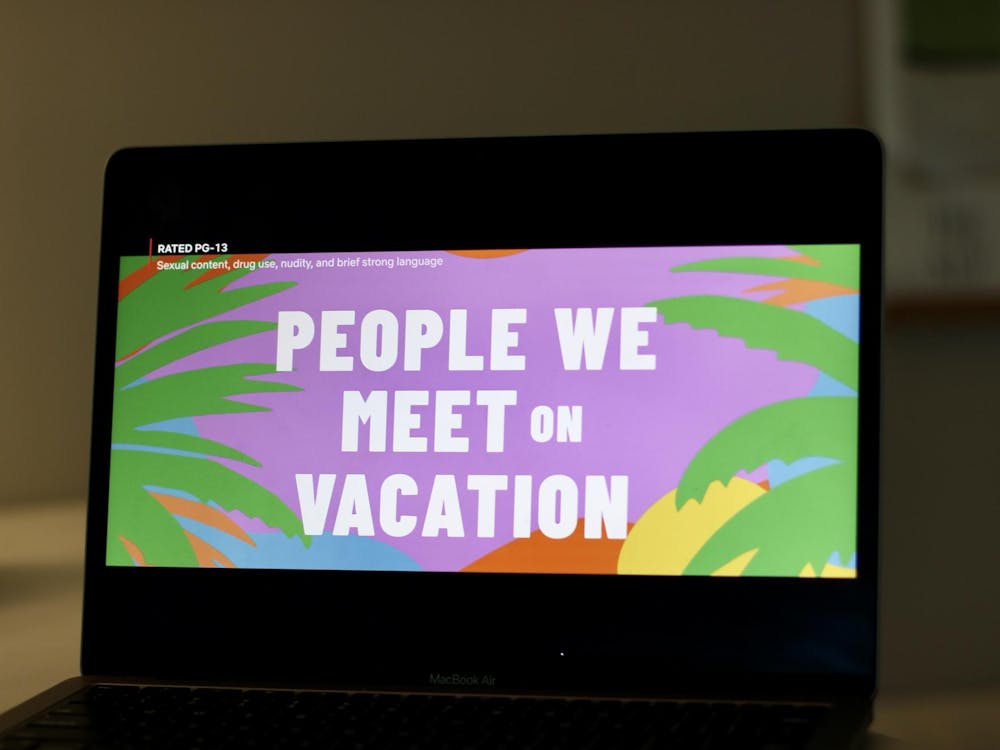On June 6, thousands of protesters stood on 16th Street in Washington, D.C. with yellow scuff marks on the bottom of their shoes from the newly commissioned mural spelling “Black Lives Matter” under their feet. Kendrick Lamar’s song “Alright” blared from the speakers as the crowd chanted along with the chorus, “We gon’ be alright.” This unifying phrase has echoed through the streets of countless cities during Black Lives Matter protests since the release of the song in 2015. Although demonstrators have added “Alright” to the canon of protest music, Lamar did not intend for his song to galvanize the nation into action.
“It’s not like he deliberately wrote the song with an eye towards thinking it would become the song of this movement,” said Jack Hamilton, an associate professor of media studies and American studies and Slate pop critic. “The movement itself has done this.”
Protest music transcends genre and has no defined audible characteristics. Rather, what characterizes a song as a piece of protest music is the relationship between audience and artist. Lamar’s lyrical commentary on the perpetuation of injustice and racism in the country became the anthem of the Black Lives Matter movement because supporters needed to hear that everything would be okay.
Artists are inherently reactive to the stimulus around them, so when the country goes through a period of notable change, they create art. American songwriter and poet Abel Meeropol wrote “Strange Fruit” — nominated for Time Magazine’s Song of the Century in 1999 — in 1937 after he saw a photograph of a lynching of two Black men in Indiana. Jazz Singer Billie Holiday recorded her rendition of the song with Commodore Records in 1939 after her label, Columbia Records, denied her recording request. She released the record during the height of the anti-lynching movement. Prior to the release, protest music had not been commercially viable, nor had a star of her stature made such powerful political statements through their music.
Amidst the burgeoning Civil Rights Movement, folk artist Bob Dylan paved cultural space for protest with his 1963 album “The Freewheelin’ Bob Dylan” — featuring the famous protest songs “Blowin’ in the Wind” and “Masters of War” — and his 1964 album “The Times They Are A-Changin’.” Acclaimed singer songwriter Sam Cooke heard “Blowin’ in the Wind,” which inspired his own expressive freedom, manifesting itself in the form of another timeless protest song, “A Change is Gonna Come.”
1968 — which has been compared to 2020 in several accounts by historians and writers — was a year of political and social turmoil. From the assassinations of civil rights leader Martin Luther King Jr. and U.S. Senator Robert Kennedy while troops fought overseas in the widely contested Vietnam War to the presidential election of Richard Nixon during the outbreak of the H3N2 virus, there was widespread dissent in the country. Criticisms of Nixon’s presidency intensified during the Watergate scandal in the 70s, and artists — like Stevie Wonder with “You Haven’t Done Nothin'” — used their platforms to protest the state of the government.
“Any time that there is a mass political movement like we have seen in the last several years — which I would say has certainly intensified over the last four years — there’s going to be a soundtrack to that,” Hamilton said.
The soundtrack of protest music today is predominantly hip-hop — the dominant genre in popular music over the last few decades. The genre has a rich history of politics and protest with hip-hop groups N.W.A. and Public Enemy in the 80s and 90s, and the commercial viability of protest music in the hip-hop genre has not dwindled. Streaming services like Spotify created 2020 protest music playlists to maximize streams. Some of the featured songs include “I Can’t Breathe” by H.E.R. and “The Bigger Picture” by Lil Baby.
The advent of social media increased the ways in which these songs can be popularized. A few months ago, “This is America” by Childish Gambino trended on TikTok as users stood in solidarity with the Black Lives Matter movement. Social media has made forms of protest more accessible than ever. This is demonstrated in its ability to reach a younger audience — which is powerful because children act as moral symbols in movements against violence. Twelve-year-old singer Keedron Bryant released his single “I JUST WANNA LIVE” in June after a video of him performing the song went viral.
Regardless of the outcome of the election, the issues of systematic racism and police brutality at the forefront of the protest music scene will still require more action. The pain, bruises and scars from a history of inequality and unjust violence will not disappear this week. Protests were already being scheduled in anticipation of the wake of the 2020 election.
The beauty of protest music is how it adapts to the times and characterizes the time period in which it is created. The music industry will continue to reflect the reactions of the public in the following months. Once again, “the times they are a-changin’,” but there is hope that it’s going to be alright.







